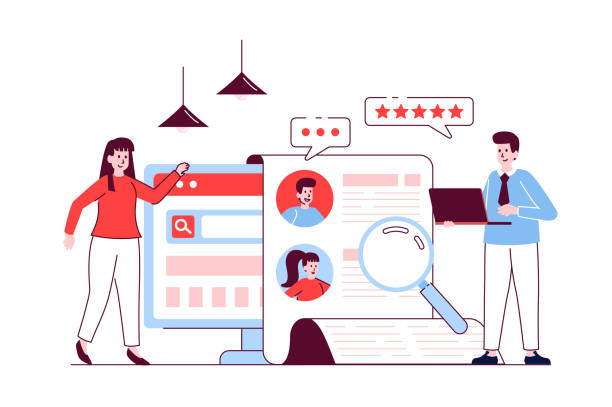Importance of Multilingual Website Design in Today’s World
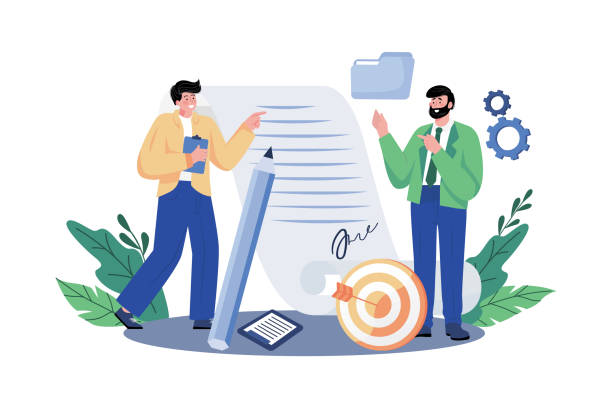
The internet has transformed into a global village, where geographical boundaries have become increasingly insignificant.
For businesses and organizations aiming to reach a wider audience, #multilingual_website_design is no longer an option, but a necessity.
In today’s interconnected world, a website that speaks only one language severely limits its audience potential.
Imagine a company based in Tehran wanting to sell its handcrafted Persian rugs to customers in Europe, North America, or even East Asia.
Without a multilingual website design, this company effectively ignores a significant portion of the international market.
This isn’t just about selling goods; for non-profit organizations, universities, or even personal blogs wanting to share their ideas, the ability to communicate with culturally and linguistically diverse audiences is crucial.
This need for increasing access to information for everyone, regardless of their native language, is a fundamental principle in modern web design.
A multilingual site demonstrates respect for cultural diversity and a commitment to serving a global community.
This approach not only expands your #target_market but also attracts #international_user_trust.
If you’re looking to increase traffic, improve international SEO, and strengthen your brand on a global scale, investing in multilingual website design will be a smart and strategic step.
This approach allows you to connect with new audiences and convey your message in a way that is understandable and appealing to them, which itself is a major competitive advantage.
Are you tired of your company’s website not being seen as it deserves, and losing potential customers? Solve this problem forever with professional and effective website design by Rasavv!
✅ Increase brand credibility and gain customer trust
✅ Attract targeted sales leads
⚡ Contact us now for a free consultation!
Undeniable Benefits of Multilingual Websites
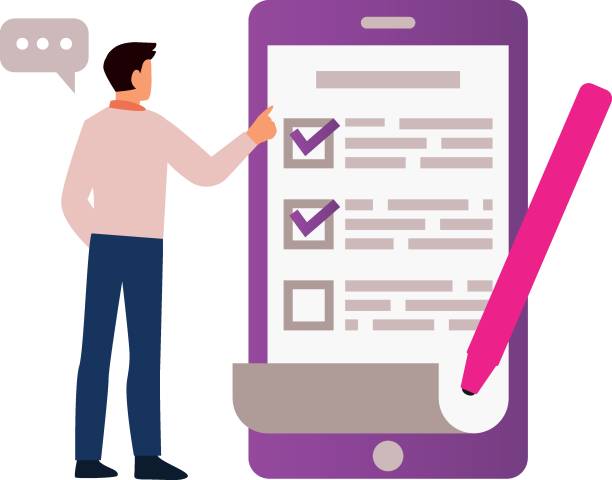
Beyond merely accessing new markets, multilingual website design brings a host of strategic advantages to businesses.
One of the most important is a significant increase in international SEO.
Search engines like Google rank multilingual websites higher due to their provision of relevant content for users in different regions.
This means more organic traffic and a reduced need for costly advertising campaigns in new target markets.
A website with language switching capability demonstrates a brand’s professionalism and global vision, which can significantly enhance its credibility in the eyes of international customers.
Furthermore, improved user experience is also a key benefit.
Users tend to interact with websites that offer content in their own language, as this conveys a sense of comfort and trust.
This leads to higher conversion rates and increased user time on site.
Have you ever considered how a simple word or phrase can have completely different meanings in different cultures? Providing localized content is not just about mere translation; it also involves considering cultural nuances, local idioms, and even specific currency units and dating conventions for each region.
This level of precision creates a deeper connection with the audience and shows that you care about their needs.
Ultimately, multilingual website design is a long-term investment that yields significant returns through market expansion, increased sales, and strengthened customer loyalty.
Technical Challenges and Solutions for Multilingual Website Design
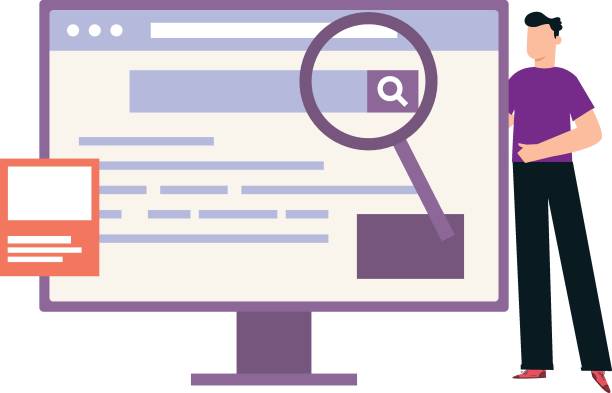
Multilingual website design, despite its many advantages, also comes with its own technical challenges that need to be carefully considered.
One of the most important of these challenges is URL structure.
Should subdomains (e.g., en.example.com), subdirectories (e.g., example.com/en), or URL parameters (e.g., example.com?lang=en) be used? Each has its own advantages and disadvantages in terms of SEO and management.
Another challenge is content management.
Using Content Management Systems (CMS) that support multilingual capabilities, such as WordPress with plugins like WPML, or platforms like Drupal and Joomla, is essential.
These tools help you easily organize and update different language versions of your content.
Choosing the translation method (human translation, machine translation, or a combination of both) is also crucial; machine translations may be fast and inexpensive, but they often lack the cultural accuracy and linguistic nuances necessary for effective communication.
Furthermore, implementing `hreflang` tags for search engines to identify different language versions of a page is of high importance.
These tags help search engines display the appropriate content to users in different linguistic regions and prevent duplicate content issues.
Issues related to fonts, text direction (such as right-to-left for Persian and Arabic), and image loading must also be considered to ensure a consistent and optimal user experience across all languages.
These specialized aspects highlight the need for a development team with sufficient knowledge in international website development.
| Technical Challenge | Description | Key Solution |
|---|---|---|
| URL Structure | How to organize addresses for different languages (subdomain, subdirectory, parameter) | Choosing an appropriate structure considering SEO and management, using hreflang tags |
| Content Management | Maintaining and updating content in multiple languages | Using multilingual-supported CMS (WPML, Drupal) |
| Translation Quality | Ensuring accuracy and proper localization of content | Combination of human translation and professional tools |
| RTL/LTR Support | Text direction (right-to-left or left-to-right) and element layout | Using appropriate CSS and UI frameworks with RTL support |
| Fonts and Characters | Correct display of specific letters and characters for each language | Using web fonts with broad Unicode support |
International SEO for Multilingual Websites
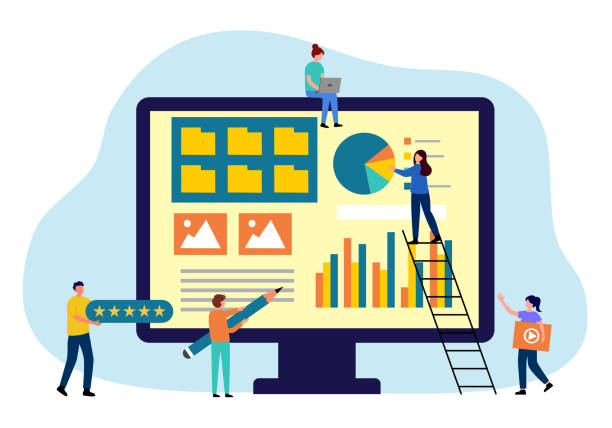
SEO for multilingual website design is a complex and vital area that requires specific strategies.
The main goal is for search engines to correctly identify different language versions of your website and display them to the appropriate users in each region.
One of the most important tools for this purpose is the correct use of the `hreflang` tag.
This tag tells Google and other search engines which version of a page is intended for which language or geographical region.
Improper implementation of `hreflang` can lead to serious SEO issues, including duplicate content and reduced rankings.
Therefore, ensuring the correctness of these tags, even with content changes, is of paramount importance.
In addition, keyword research for each language separately is essential.
Words that are common in one language may have a different meaning in another or may not be common at all.
Using local keyword research tools to identify phrases that your target audience actually searches for, is crucial.
This helps you optimize your content for each market and achieve maximum visibility.
Also, local and international link building should be considered.
Obtaining backlinks from reputable and relevant websites in each country or region, can significantly boost your site’s credibility and ranking.
Do not forget that site loading speed and its responsiveness for mobile, are equally important for international SEO.
Google highly values a good user experience, and this includes providing a fast and accessible site on any device and in any language.
Don’t have a company website yet and missing out on online opportunities? With professional corporate website design by Rasavv,
✅ Double your business credibility
✅ Attract new customers
⚡ Free consultation for your corporate website!
Content Strategy and Localization in Multilingual Design

Success in multilingual website design is not limited to text translation; it requires a comprehensive strategy for content localization.
Localization goes beyond word-for-word translation and involves adapting content to the culture, values, habits, and even humor of local audiences.
For example, an image that is perfectly normal in one culture may be considered offensive or inappropriate in another.
Therefore, reviewing images, videos, and other visual elements for each target market is of high importance.
Choosing native and specialized translators in each field, ensures high quality and accuracy of translations.
Using machine translation tools alone, although potentially cheaper, often results in unnatural or even incorrect content that damages brand credibility.
A Translation Memory and Glossary are essential for maintaining consistency in terminology and brand tone across all languages.
These tools are particularly useful for large and long-term projects.
Did you know that even date formats, units of measurement and currencies also need to be localized for each region? For example, the date “01/02/2023” in the US means “January 2nd”, while in many European countries it means “February 1st”.
These small details can have a big impact on user experience and audience trust.
Producing fresh and engaging content for each language, not only helps with SEO but also shows that you value each of your global audiences.
This analytical and comprehensive approach to content, is the core of a successful multilingual website design.
User Experience (UX) in Multilingual Website Design
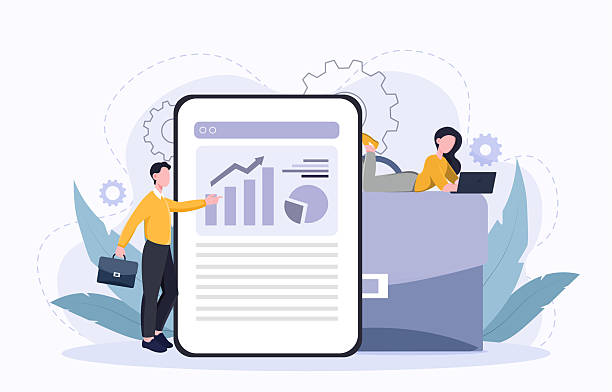
User Experience (UX) is one of the most important factors in the success of multilingual website design.
Even if your site is technically flawless and offers high-quality content, if the user cannot easily find and use their desired language, they will have an unpleasant experience.
The User Interface (UI) design should ensure that language selection is quick and simple.
Placing language selection options in clear and accessible locations, such as the site header or footer, is essential.
While using country flags to indicate languages, is common, it can be misleading; it is better to use language codes (e.g., EN for English, FA for Farsi) or full language names (English, فارسی) should be used.
The User Flow should be logical and intuitive in every language.
For example, contact forms, purchasing steps and site navigation should function uniformly across all language versions and be consistent in terms of content and functionality.
Have you considered cultural differences in UI design? For example, in some cultures, simplicity and minimalism in design are important, while in others, richer details and visual elements are preferred.
User testing with native users in each language, provides valuable insights and helps you identify navigation, translation or cultural issues that may have remained hidden from your perspective.
This engaging and yet analytical approach, ensures that your site is attractive to global audiences not only technically, but also humanly.
Remember that an excellent user experience, will ultimately lead to increased customer satisfaction and their return to your site, and this is what distinguishes a multilingual website design project from an ordinary website.
Practical Tools and Platforms in Multilingual Website Design

Choosing the right tools and platforms is a fundamental step in the multilingual website design process.
The market offers numerous options, each with its specific advantages and limitations.
For WordPress-based websites, plugins like WPML and Polylang are among the most popular choices.
WPML provides a comprehensive solution for translating all aspects of your site, including posts, pages, categories, menus, and even widgets.
Polylang is a lighter alternative that is more suitable for smaller projects.
For more robust platforms like Drupal and Joomla, multilingual capabilities are supported natively or through dedicated modules, providing greater flexibility for developers.
In addition to CMS, Translation Management Systems (TMS) also play a key role.
Platforms such as Phrase TMS, Smartling and Crowdin enable managing the translation process, collaborating with translators and maintaining translation quality.
These tools often integrate with various CMSs and simplify the content translation process.
For initial or quick translations, Google Translate API and DeepL API can be useful, but as previously mentioned, for sensitive and critical content, human translation is essential.
The correct selection of these tools can significantly reduce the time and costs associated with building an international website and improve the final quality.
Familiarity with these platforms and their capabilities is an advantage for anyone involved in a multilingual website design project.
| Tool Type | Examples | Main Use |
|---|---|---|
| CMS Plugins | WPML, Polylang (for WordPress) | Managing multilingual content within the Content Management System |
| CMS with Native Support | Drupal, Joomla | Robust platforms with built-in multilingual capabilities or dedicated modules |
| Translation Management Systems (TMS) | Phrase TMS, Smartling, Crowdin | Managing the translation process, collaborating with translators, and quality control |
| Machine Translation APIs | Google Translate API, DeepL API | Fast and automated translation (for non-sensitive content) |
| RTL Editors | CSS and UI frameworks with RTL support | Adjusting text direction and layout for right-to-left languages |
Common Mistakes in Multilingual Website Design and Solutions
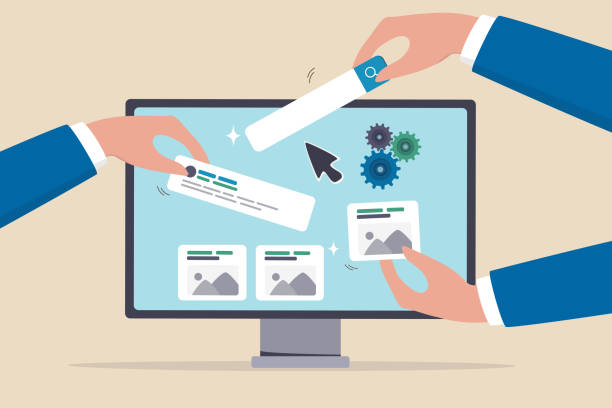
Even with the best intentions, multilingual website design projects can fall victim to common mistakes that negatively impact their success.
One such mistake is insufficient planning for international SEO.
Many businesses merely translate content and overlook the importance of `hreflang` tags, local keyword research and correct URL structure.
This oversight can lead to the site not being visible in international search results.
The solution is to incorporate international SEO into your international website development strategy from the outset.
Another mistake is neglecting cultural localization.
Simply translating content without considering cultural differences, can lead to misunderstandings or even offense to the audience.
Did you know that some colors or symbols have completely different meanings in various cultures? For example, white symbolizes purity and weddings in some cultures, while in others it symbolizes mourning.
The solution is to use native translators and cultural experts to review and adapt the content.
Lack of proper technical support for right-to-left (RTL) languages like Persian and Arabic, is also a common error.
This can lead to layout disruption, readability issues and a poor user experience.
Ensuring that your developers are familiar with RTL design principles and have the necessary tools for correct implementation is crucial.
Finally, failure to continuously update translated content can lead to outdated information and decreased site credibility.
A multilingual website is not a one-time project, but requires ongoing maintenance and updates.
Research shows that 80% of customers trust companies with professional websites more. Does your current site inspire this trust?
With Rasavv’s corporate website design services, solve the problem of lack of customer trust and a weak online image forever!
✅ Create a professional image and increase customer trust
✅ Attract more sales leads and grow your business
⚡ Get a free consultation
The Future of Multilingual Website Design and New Trends

The world of the web is constantly evolving, and multilingual website design is no exception.
New technological trends and changes in user behavior, shape the future of this field.
One of the most significant trends, is the remarkable progress in artificial intelligence and Neural Machine Translation (NMT).
While human translation still remains unrivaled for accuracy and cultural localization, NMTs are now capable of producing much higher quality translations than in the past.
This means that in the near future, the initial translation process can be done faster and more cost-effectively, but the need for human editing and localization will still remain.
Also, the increasing importance of voice search and smart assistants, presents new challenges for multilingual website design.
Keywords for voice search are often longer and more conversational, and this requires a different approach to keyword research for each language.
Personalized user experience is also a growing trend.
Websites will be able to automatically suggest relevant content and the appropriate language based on geographical location, browser language, and even user search history, which elevates the user experience to a new level.
The emergence of Virtual Reality (VR) and Augmented Reality (AR) technologies on the web, may also mean a need for localizing interactive and 3D content for global audiences.
These developments indicate that multilingual website design still remains a dynamic and evolving field that requires continuous updating of knowledge and strategies.
Final Conclusion and the Importance of Action

In conclusion, it is clear that multilingual website design is not merely a passing trend, but a strategic imperative for any business, organization or individual seeking to reach a global audience.
Given the ever-expanding internet and the globalization of the economy, ignoring the multilingual capability of a website means missing out on countless opportunities for growth and development.
From increasing visibility in international search engines and improving SEO, to providing an exceptional user experience that fosters customer trust and loyalty, the benefits of a multilingual website design are beyond expectations.
Implementing a multilingual site requires meticulous planning, attention to technical and cultural details, and the correct selection of tools and platforms.
Challenges such as SEO management, content localization and maintaining UX consistency across different languages exist, but with the right approach and the help of specialists, these challenges are surmountable.
Is your business ready to break language barriers and enter new markets? The decision to create a multilingual website, is an investment for the future that will not only help you connect with your current audience on a deeper level, but also open new doors to business and communication opportunities worldwide.
It’s time to turn your website into a powerful tool for global communications and benefit from the advantages of professional multilingual website design.
Frequently Asked Questions
| Number | Question | Answer |
|---|---|---|
| 1 | What is multilingual website design? | Multilingual website design means creating a website whose content is available to users in several different languages. This is usually done through a simple user interface for language switching. |
| 2 | Why should we design a multilingual website? | Multilingual website design helps you reach more audiences worldwide, provide a better user experience for international users, and improve your global SEO. |
| 3 | What are the main methods for implementing multilingualism on a website? | The main methods include using subdomains, subdirectories, or URL parameters for each language, and also using completely separate domains for each language. |
| 4 | For SEO, is it better to use a subdirectory or a subdomain? | In terms of SEO, both subdirectory and subdomain methods can be effective. However, many SEO specialists prefer subdirectories due to better transfer of main domain authority. |
| 5 | What are the important points in translating multilingual site content? | Translation should be done by native translators, content should be localized (localization) in addition to translation to match the target audience’s culture, and pure machine translation should be avoided. |
| 6 | What is the role of the hreflang tag in multilingual site SEO? | The hreflang tag helps search engines like Google display the correct language and regional version of a page to the appropriate users, which also prevents duplicate content issues. |
| 7 | Can a website be made multilingual without coding? | Yes, in Content Management Systems (CMS) like WordPress, powerful plugins such as WPML or Polylang exist that enable making a website multilingual without needing to code. |
| 8 | What are the challenges of multilingual website design? | Challenges include translation management, content localization, adherence to SEO principles for each language, technical support for different languages, and ensuring design consistency across different languages. |
| 9 | What is the difference between translation and Localization? | Translation is merely rendering words from one language to another, while localization involves adapting content to the culture, customs, currency, date and time formats, and even appropriate colors for the target audience. |
| 10 | What is the best User Experience (UX) for language switching? | A clear and accessible language switcher (usually in the header or footer), using the language name instead of flags (due to regional diversity), and maintaining the user’s position after language change are important UX points. |
And other services of Rasavv Advertising Agency in the field of advertising
Smart Brand Identity: An effective tool for attracting customers with the help of SEO-driven content strategy.
Smart Direct Marketing: A dedicated service for growing user engagement based on key page optimization.
Smart Custom Software: A professional solution for analyzing customer behavior with a focus on custom programming.
Smart Website Development: A fast and efficient solution for increasing sales with a focus on custom programming.
Smart Sales Automation: An effective tool for increasing click-through rates using real data.
And over a hundred other services in the field of internet advertising, advertising consulting, and organizational solutions
Internet Advertising | Advertising Strategy | Advertorials
Sources
Comprehensive Guide to Multilingual Website Design and International SEOImportance of Multilingual Websites for Business DevelopmentKey Tips for Implementing and Managing International WebsitesContent Localization and UX in Multilingual Website Design
? Are you ready to transform your business in the digital world? Rasavv Afarin, a leading digital marketing agency, paves your path to growth by offering comprehensive services including custom website design, SEO, and advertising campaign management.
📍 Tehran, Mirdamad Street, next to Bank Markazi, Southern Kazeroon Alley, Ramin Alley, No. 6

